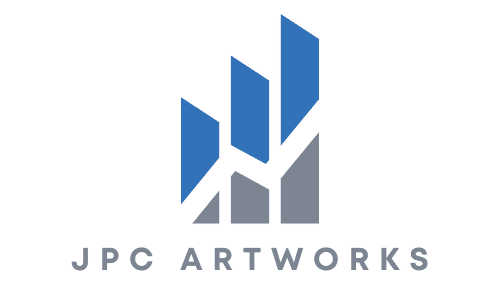What Are the Latest Tech Innovations in Building Maintenance for UK Commercial Properties?

In the realm of building and estate management, the integration of technology is no longer an option but a necessity. In the past few years, the real estate industry has undergone a significant transformation. We have seen the rise of smart technology in commercial buildings, data-driven property management solutions, and innovative construction materials. These advancements have made building maintenance an exciting arena filled with endless possibilities.
Today, we will delve into the latest tech innovations in building maintenance for UK commercial properties. Technology, innovation, and smart are the words that will resonate throughout this discourse.
Also read : What Are the Strategies to Attract International Students to UK Private Rental Sector (PRS) Developments?
The Rise of Smart Building Systems
Smart building systems are no longer a futuristic concept. They have become a fundamental component of many commercial buildings across the UK, providing numerous advantages from improved energy efficiency to enhanced tenant satisfaction.
A smart building is one that uses automated processes to control the building’s operations, including heating, ventilation, air conditioning, lighting, and security. The advent of the Internet of Things (IoT) technology has made it possible for these systems to collate real-time data, analyse it, and then make necessary adjustments to optimise building performance.
Additional reading : What Are the Economic Benefits of Investing in Real Estate Near Major UK Transportation Hubs?
Such systems can monitor and regulate energy usage, thereby reducing costs and promoting sustainability. They can also enhance security through features such as automated access control, video surveillance, and fire detection. Furthermore, by optimising the workspace environment, these smart systems can improve tenant experience and increase occupancy rates.
Data-Driven Property Management Solutions
With the increasing demand for efficient building management, the industry has turned to data-driven solutions. These solutions leverage the power of data to streamline operations, enhance decision-making, and increase the overall performance of a property.
Data-driven property management solutions collect data from various sources such as tenant feedback, maintenance records, and energy consumption. They then analyse this data to derive meaningful insights that can inform decisions. For instance, these solutions can identify patterns in tenant complaints, allowing property managers to address recurring issues proactively. They can also highlight areas of high energy usage, enabling managers to implement energy-saving measures.
Moreover, these solutions can automate routine tasks, making property management more efficient. By automating tasks such as tenant communication, maintenance scheduling, and rent collection, they free up time for property managers to focus on strategic initiatives.
Innovative Construction Materials and Methods
Innovation in construction materials and methods lies at the heart of the future of building maintenance. The construction industry is increasingly harnessing technology to create materials that are not only more durable but also environmentally friendly. These materials can enhance the lifespan of a property, reduce maintenance costs, and contribute to a property’s sustainability profile.
One such material is self-healing concrete. This innovation in building technology has the potential to revolutionise building maintenance. The concrete is embedded with bacteria that produce limestone when activated by water, effectively healing cracks and prolonging the structure’s life.
Additionally, the industry is experimenting with 3D printing to construct buildings. This method reduces construction time, minimises waste, and allows for customisation, making it a promising innovation for the future of the industry.
The Role of Renewable Energy in Commercial Properties
Renewable energy is becoming increasingly important in the commercial real estate market. It offers a cost-effective, sustainable alternative to traditional energy sources, making it an appealing option for commercial building owners and tenants alike.
Solar panels, geothermal energy systems, and wind turbines are some examples of renewable energy technologies being adopted in commercial buildings. These systems can significantly reduce a building’s reliance on traditional energy sources, leading to substantial cost savings in the long run.
Moreover, renewable energy systems can enhance a property’s marketability. More and more tenants are seeking green buildings due to their environmental impact and potential cost savings. As such, incorporating renewable energy can increase the value of a commercial property and make it more attractive to potential tenants.
The Future of Building Maintenance: Emerging Trends
The future of building maintenance in the UK is exciting and full of potential. New trends are constantly emerging, driven by the need for efficiency, cost-effectiveness, and sustainability in the commercial real estate sector.
One key trend is the increasing adoption of artificial intelligence (AI) in building management. AI can automate many aspects of building maintenance, from predictive maintenance to energy management. It can analyse vast amounts of data, identify patterns, and make predictions, enabling property managers to take proactive steps to prevent issues before they occur.
Another trend is the use of drones for building inspections. Drones can access hard-to-reach areas, capture high-resolution images, and provide real-time data, making them an efficient tool for inspecting commercial buildings.
Furthermore, the use of virtual reality (VR) and augmented reality (AR) is gaining traction in the industry. These technologies can be used for various purposes, such as virtual property tours, maintenance training, and even in the design and construction phases.
While these innovations have already started transforming building maintenance, they are just the tip of the iceberg. As technology advances, we will likely witness even more groundbreaking solutions that will redefine building maintenance in the UK.
The Interplay of AI and Data Analytics in Property Management
As we have established, technology plays a pivotal role in the evolution of building maintenance. A significant player in this transformation is artificial intelligence (AI). The fusion of AI and data analytics is shaping a new landscape in property management.
AI is a technology capable of mimicking human intelligence. On the other hand, data analytics is the process of examining, cleaning, transforming, and modelling data to discover useful information. When these two are integrated into property management, the results are nothing short of revolutionary.
AI can learn from data sources, identify patterns, and make predictions. This ability can be used to forecast maintenance needs and prevent property damage. For instance, an AI-powered system could detect a leak in a commercial building based on data patterns from smart sensors. Property managers can then address the issue before it becomes a significant problem, saving time, money, and resources.
AI can also streamline facilities management by automating routine tasks such as HVAC control, lighting adjustment, and security monitoring. Predictive analytics, a subset of AI, can optimise energy usage by predicting peak times and adjusting systems accordingly. This leads to cost savings and a smaller carbon footprint, enhancing the sustainability of commercial buildings.
Data analytics, in conjunction with AI, can further elevate the tenant experience. It can analyse tenant feedback and behaviour patterns to personalise services and amenities. This creates a more desirable built environment, leading to higher tenant satisfaction and retention rates.
The Integration of VR and AR in the Construction and Estate Industry
Another tech innovation making waves in the construction and estate industry is the use of virtual reality (VR) and augmented reality (AR). These technologies have the potential to reshape building services, from design to maintenance.
VR involves the use of computer technology to create a simulated environment. It immerses users into a 3D world, providing a lifelike experience. On the other hand, AR overlays digital information onto the real world, enhancing the user’s perception of reality.
In the realm of building maintenance, VR can be used to train maintenance staff. It can simulate various maintenance scenarios, giving staff hands-on experience without the risk of damaging actual property. This can lead to better efficiency and quality in building services.
AR can be used in building inspections. With AR, inspectors can overlay digital information, such as maintenance records or structural plans, onto the physical building. This can aid in identifying potential issues, improving the accuracy and efficiency of inspections.
In the design and construction phases, VR can provide virtual tours of proposed designs. This allows stakeholders to explore and interact with the design before it’s built, enabling them to make informed decisions. AR can visualise building materials in the real world, helping select the most suitable ones.
Conclusion: The Evolution of Building Maintenance in the UK
The integration of tech innovations in the UK’s building maintenance sector is not just a trend—it’s a revolution. Smart building systems, data-driven property management solutions, innovative construction materials and methods, renewable energy adoption, and the use of AI, VR, and AR are redefining the built environment in commercial properties.
These innovations are altering the way we manage, maintain, and interact with commercial buildings. They are making property management more efficient, saving costs, and enhancing tenant experience. More importantly, they are pushing the boundaries of sustainability in the real estate sector.
The ongoing advancement in technology promises even more exciting developments in the future. As we continue to harness these innovations, we will undoubtedly see a more sustainable, efficient, and tenant-friendly landscape in the UK’s commercial properties sector. And that’s a future we can all look forward to.
